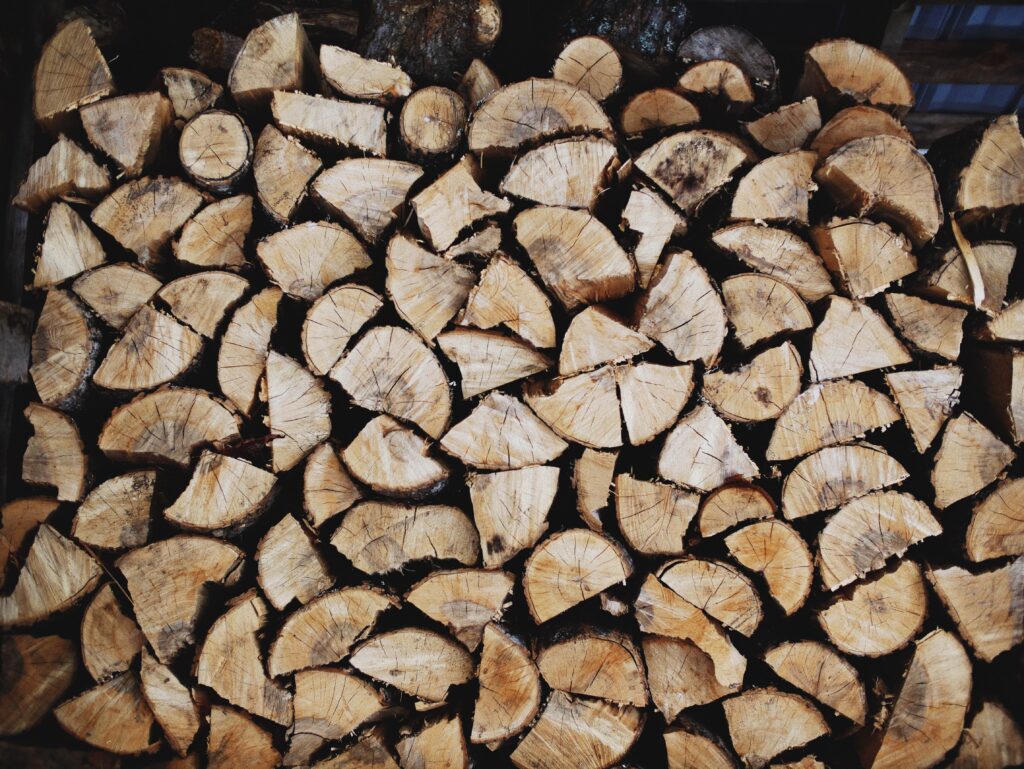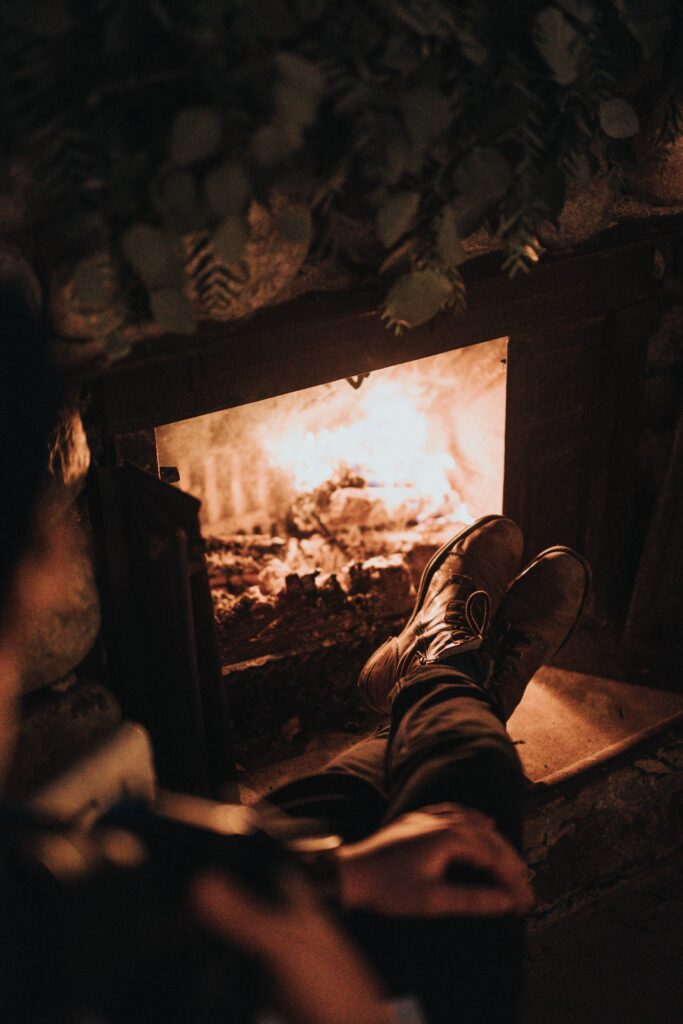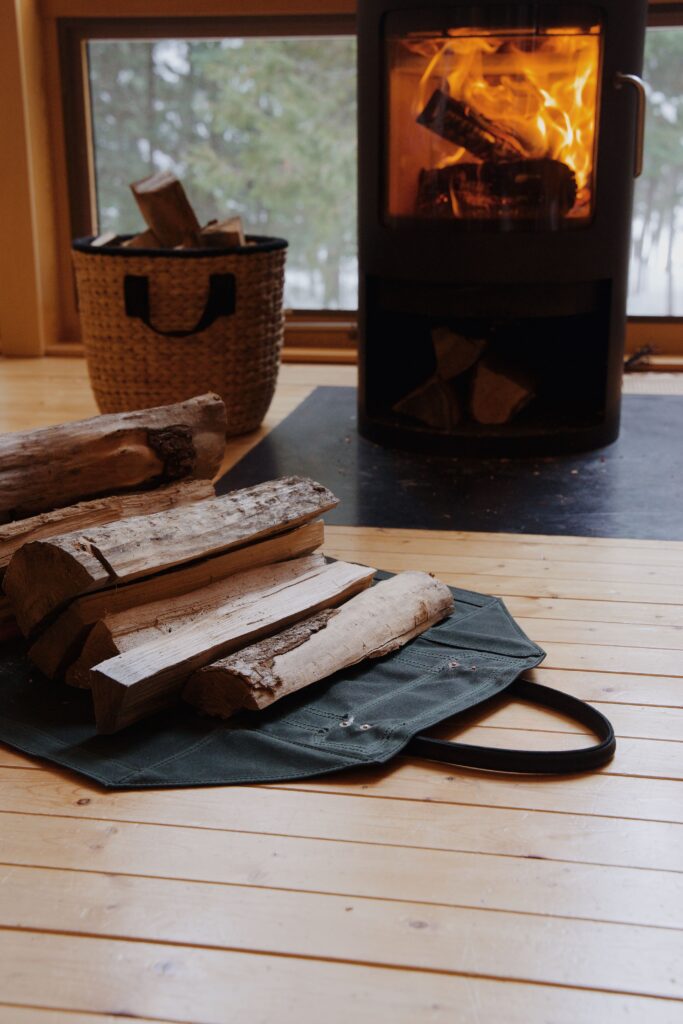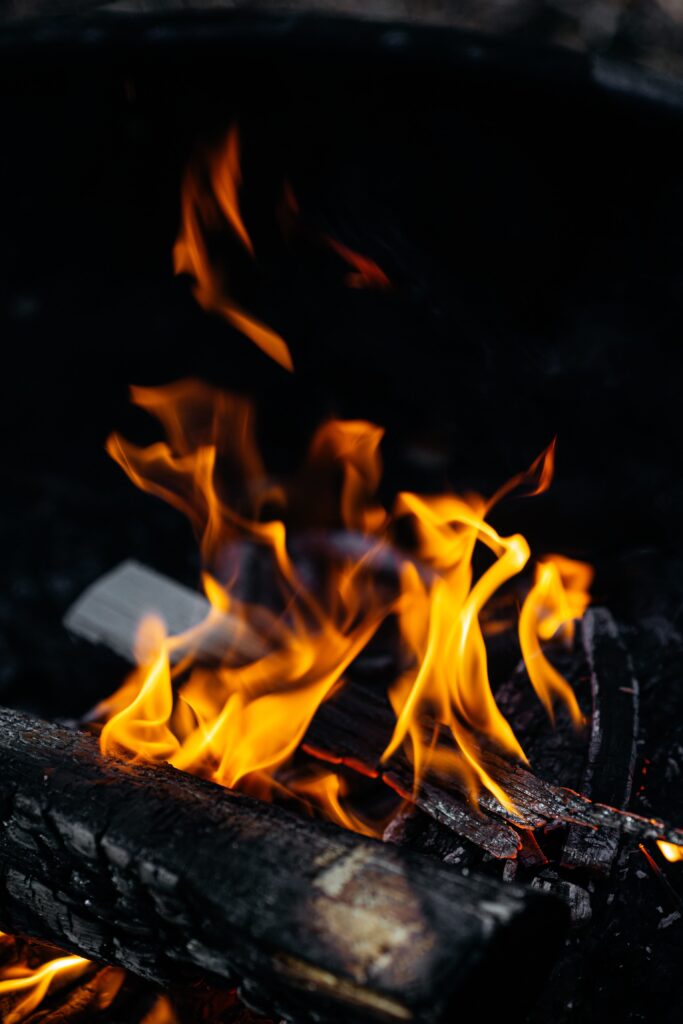Many people use wood-burning stoves or fireplaces to heat their homes. When using a woodburning stove there are some things to keep in mind to have the most efficient fuel source. You need to consider what size you cut your firewood to, and how to stack your firewood to season it. You should also think about what wood is best for your needs. Lastly, you should consider how much you will need to ensure you have fuel for the whole winter. From chopping your firewood to bringing it in and stoking a fire, Duluth Pack has you covered. Duluth Pack carries quality axes designed for all your needs. We have also created the Log Carrier to carry your firewood with ease and a fire poker to stoke the fire.

If you are new to owning a wood-burning stove or simply want to have a more efficient fire this blog is for you. Duluth Pack has gathered some frequently asked questions about firewood to help you better understand your needs regarding a fireplace or wood-burning stove.
What is a cord of Firewood?
A cord of firewood is equal to 128 cubic feet of firewood. This is roughly a stack of 4’ tall, 4’ wide, and 8’ long when measured. A proper cord of firewood is stacked tightly with little gaps and should not be stacked crisscrossed. When you are collecting your firewood, some places will let you stack it yourself which is a good sign. You may also hear a cord of firewood referred to as a face cord, a truckload, a rack, or a pile. If the seller is using different terms, you should confirm how much firewood you are receiving to ensure that you order enough for winter.
What is the Best Wood For a Woodburning Stove or fireplace?
When using your woodburning stove you want wood that will burn as efficiently as possible. This means you want to think about choosing the correct type of wood, wood from the right source, and seasoned wood.

Hardwoods Versus Softwoods
There are two types of wood that you will see, both hardwoods and softwoods. When selecting your firewood, you want to look for hardwoods like Oak, Ash, Birch, and Cherry. These woods will burn slower and cleaner for a more efficient burn. They will also leave some coals making it easier to add more logs and continue your fire. Softwoods are not as great for your fireplace or stove. Pine, Firs, and Cypress trees are all softwoods and are not ideal for burning. Why do softwoods not make good firewood though? This is because softwoods burn quickly and produce more smoke and soot. This soot can build up and is not good for your chimney long-term and increases the risk of a chimney fire. Softwoods also don’t produce coals, so they make maintaining a fire more difficult and can require a fire starter to maintain.

Where Should You Get Your Wood From?
Choosing your wood from a local option is not only good for the local economy it also reduces the risk of transporting invasive species. Insects that are harmful to our forests can be easily transported through firewood from infected forests. The farther your firewood travels to you the higher the chances are you could be introducing something harmful to your backyard. Some invasive species that can travel with firewood include the emerald ash borer, the Asian long-horned beetle, and the gold spotted oak borer.
What is Seasoned Wood?
While choosing your firewood you will want to use wood that has been seasoned. This means that the wood has had time to dry out properly and its moisture content is down. Wood that has just been cut or green wood is not ideal for burning whether for a campfire, fireplace, or a woodburning stove. It is not ideal because the moisture content in green wood makes it difficult to light without a fire starter. Once lit the water from the firewood must be burned off as well. This makes it so your fire is smoky and is not producing as much heat making it inefficient. Wood that sits until it has had time to dry out is considered seasoned wood and is what you are looking for. You can ask your firewood seller when the wood was cut to help decide if it is ready to be burned.
You can also use our tips and tricks listed below to find the right firewood for your needs.
What is the Best Way to Stack Firewood?
When you are stacking your firewood, you are attempting to create a stack that allows for airflow. It is important to have ventilation in your wood pile so all pieces can begin to dry out. If you are stacking rows of firewood a great stacking method is crisscrossing layers of wood. By crisscrossing the layers of wood, you are creating pockets for air. This air movement helps with the drying process. When beginning a wood pile you do not want the bottom pieces sitting on the ground and damp grass. Place pallets down and then begin stacking your firewood on top of them.
Another important thing to consider is how you are protecting your firewood from the rain and snow. You will want to cover your firewood from inclement weather with a tarp or tilted roof shelter. You do not want to leave a tarp on your firewood constantly though. The tarp can trap condensation and moisture that is not good for your firewood.
How Long Does Firewood Need to Dry?
Firewood takes up to 6 months to be dry enough for a good quality fire. Drying out your firewood is an important part of the process before you use it within your stove. Trees are full of moisture so when the wood is harvested it has up to 50% water content. A high water content hurts the wood’s ability to produce heat and to have a nice burn in your stove. For a productive fire, you want the water content in your firewood to be about 20% or under. To reach this ideal water content in your firewood you will want to “properly season” the firewood. In order to properly season your firewood, you want to stack split firewood outside for up to six months. Then the wind and sun will season it for you.
How do you know If Firewood is Ready to Burn?

There are three simple tests that you can do to determine if your firewood is seasoned and ready for your woodburning stove. You can check the readiness of your firewood through its color, sound, and bark. Firewood that is ready to be burned will lighten in color as moisture leaves the wood. This firewood will go from a rich darker tan to a light tan or grey color. The sound your firewood makes when it is smacked together is another way to check if your firewood is seasoned. When you smack two pieces together you should hear a solid, cracking sound, not a thud. Lastly, you can check your firewood by looking at the bark. If the bark is lacking moisture, it will easily fall off and it is ready to be burned.
If your firewood passes these three tests it is ready for your wood-burning stove! By using fully seasoned firewood it will burn easier without a fire starter and cleaner producing more heat. This wood will also reduce creosote build-up in your chimney compared to wood that is not seasoned.
Now you know the tips and tricks to choose the best firewood and how to season it correctly for an efficient burn. Use the Duluth Pack Log Carrier to bring in your firewood for your next fire. You can also use the Duluth Pack fire poker to help your fire burn correctly and position logs on the fire.
Stay warm, friends!


Be the first to comment on “How to Choose & Stack Firewood for a Woodburning Stove or Fireplace”